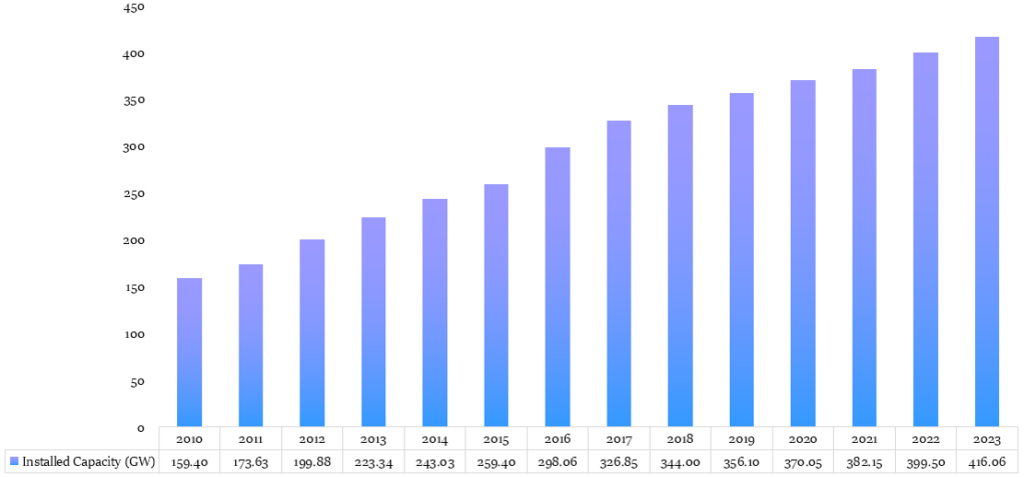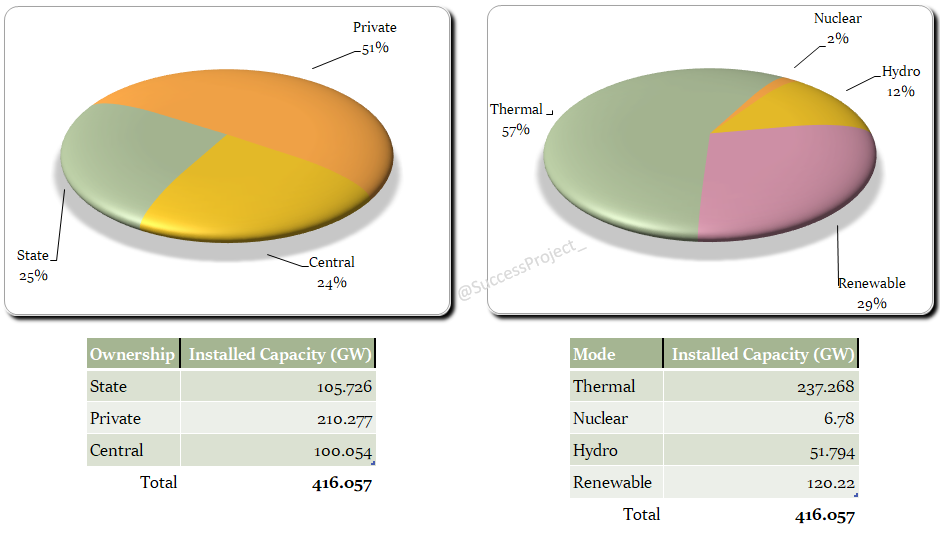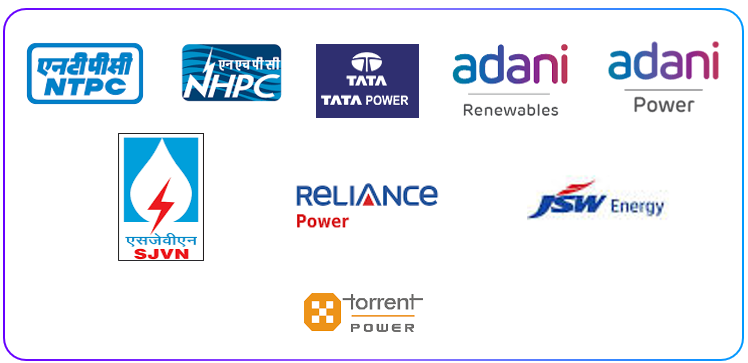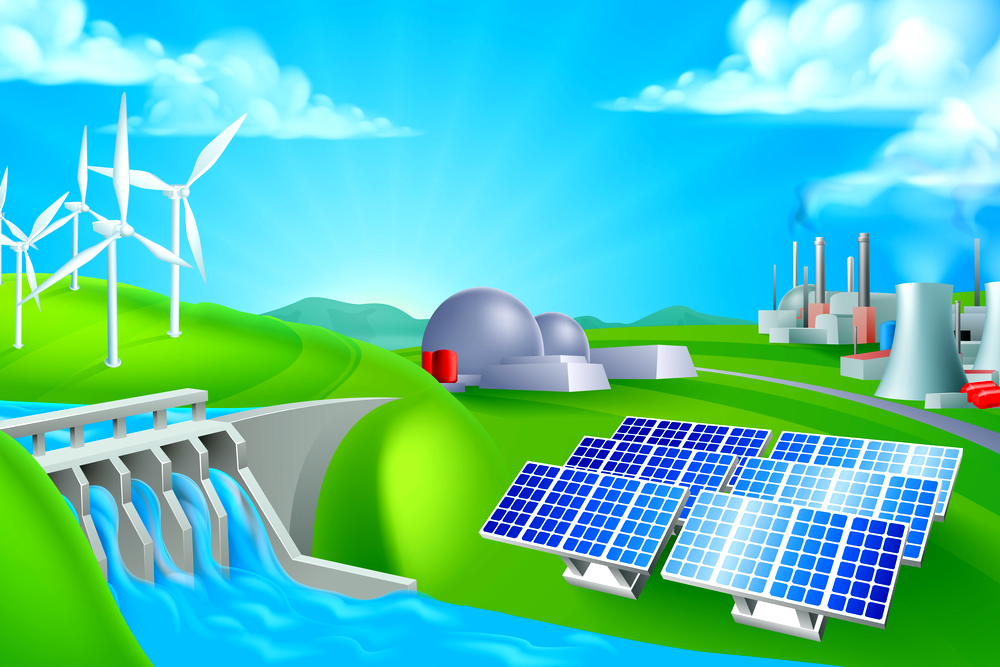In the previous blog, we provided a high-level overview of the Indian power sector. Now, let’s explore the key aspects of the Power Generation Industry within this sector. (Featured image credits: https://www.future-energy-partners.com/post/energy-losses-in-power-generation)
India is currently undergoing robust economic growth, heightening the significance of a dependable and sustainable power supply. Given its immense population and expanding industrial base, India stands among the global leaders in electricity consumption. Within this flourishing sector, there exists a diverse array of investment opportunities, encompassing conventional thermal power plants as well as renewable energy sources such as wind and solar. By delving into the intricacies of the Indian power generation industry, potential stock investors can gain invaluable insights to navigate this dynamic market successfully.
Hi, This is Venkatesh. I write on Personal Finance, Stock Investing, Productivity and Time Management. You will be interested to read more about me and the purpose of my website.
If you are interested in these topics do subscribe to my blogs. You would maximum receive 4 to 5 emails a month.
Power Generation Industry
The power generation industry actively produces electrical power, serving as the foundation of the power sector by utilizing power plants to generate electricity. In India, power generation is an unlicensed activity, with the exception of atomic energy production, which necessitates a mandatory license.
Key Metric of Power Generation Industry
The “Installed capacity” is the key metric that measures the amount of power generated by power plants in the power generation industry. In the context of the Indian power generation industry, it represents the cumulative capacity of all power plants in the country.
This metric serves as an important indicator of a nation’s power generation infrastructure and its ability to meet the growing electricity demand. The measurement is typically expressed in Megawatts (MW) or Gigawatts (GW), where 1 GW equals 1000 MW.
Over the past years, India has been consistently increasing its installed capacity to match the rising demand for electricity. As of March 31, 2023, the installed capacity in India stands at 416 GW. The chart below depicts the year-wise installed capacity (in GW) since 2010, showcasing the progressive growth in India’s power generation capabilities.

Source of Data: CEA Website, https://cea.nic.in/
This installed capacity is a dynamic number which changes every month as new capacity additions are made. You can find the current installed capacity by visiting the website of the Central Electricity Authority at https://cea.nic.in/installed-capacity-report/?lang=enhor
You find the below report which can be downloaded as a pdf or a excel.

Importance of this figure
The installed capacity figure serves as an important reference point for policymakers, energy planners, and investors to assess the current state and future prospects of the power generation industry in India.
Different means of Power Generation
There are two types of classification based on the sources used for power generation.
- Conventional and non-conventional sources of power
- Conventional: Coal, lignite, natural gas, oil, hydro and nuclear power
- Non-conventional: Wind, solar and agricultural & domestic waste.
- Renewable and non renewables source of power
Note: The above classification is only of academic interest. However, for the purpose of this discussion, we will focus on the various types of power generation in India without delving into detailed classifications.
Power Generation in India
In India, power generation occurs through multiple sources, ensuring a well-diversified energy mix. These sources include:
- Thermal power plant
- Hydel power plant
- Nuclear power plant
- Windmills
- Solar plants and
- Other renewable power generation like biomass and geothermal energy
The diversified nature of power generation sources in India ensures a more resilient and sustainable energy sector. It reduces dependency on a single source and allows for harnessing different forms of energy, including both conventional and non-conventional sources.
What the Data Says?
Based on the Installed capacity report downloaded from the CEA website, the following pie chart represents the data as of March 2023.

Inferences from the data
- The private sector owns over 50% of the power generation capacity in India,
- The thermal mode of power generation holds dominance in Power Generation.
- It is worth noting that nuclear power plants are fully owned and operated by the Central government, although this information is not indicated in the pie chart, this is as indicated in the “Installed capacity report”.
- As discussed in the previous blog, India has set ambitious goals to generate 50% of its power from renewable sources. Currently, renewables account for 29% of power generation, indicating a significant push in the next seven years to increase this share to 50%.
Challenges in the Power Generation Industry
Capital Intensity
Power generation is a highly capital-intensive business requires substantial capital investments for setting up new power plants, upgrading existing infrastructure, and adopting cleaner technologies.
Aging Infrastructure
Many power generation plants in India have aging infrastructure, which poses challenges in terms of reliability, efficiency, and maintenance.
Long Gestation Periods
Power plants takes a long time before it could start production, generate revenue and make profits. Coal-based power projects have average development and construction period of 7 to 8 years and an even longer operating period (over 25 years).
Environmental Concerns
Conventional sources contribute to pollution and carbon emissions.
Fuel Supply
The industry faces the challenge of inadequate and inconsistent supply of fuel. This is particular in case of Thermal power plants attributed due to shortage of fuel i.e. Coal/Lignite.
Others
The hesitation of state DISCOMs to tie power demand through long-term PPAs – Power Purchase Agreements (Reference: Adani Power Annual Report 2022)
Opportunities in the Power Generation Industry
The challenge of environmental concerns by conventional sources of power as opened up opportunity for non-renewable sources of power. India has ambitions to meet 50% of its electricity needs from renewable sources by 2030. This opens a huge opportunity for power generation from Solar, Wind and Water.
Note: We just saw that the Power generation industry is very diverse. There are both renewable and non-renewable sources. The challenges and opportunities in each of these sources is unique. However, the challenges and opportunities presented here is very generic. We will discuss the specific risks and opportunities in the discussion on the respective power plants from the next blog.
Listed Companies
The image below highlights a range of listed companies in the power generation industry. It is worth emphasizing that although these companies primarily function in power generation, several of them are also involved in diverse activities including transmission. Take NTPC, for example, which concentrates on thermal power stations but has extended its operations to encompass renewable power as well. In the forthcoming blogs, we will delve into these companies in greater detail, enabling us to acquire a comprehensive understanding of their operations and the significant contributions they make to the power generation sector.

Conclusion
In conclusion, the power generation industry in India has a vast installed capacity of power plants, including a mix of conventional and renewable sources, India is well-positioned to meet the increasing electricity needs of its burgeoning population and expanding industrial base. However, the industry does face its fair share of challenges around insufficient fuel supply, ageing infrastructure, regulatory complexities, transmission and distribution losses, financing constraints, and environmental concerns.
Despite these challenges, the power generation industry in India presents significant opportunities. The power generation industry offers a compelling investment landscape characterized by a diverse mix of power sources, substantial installed capacity, and potential for growth. By gaining a comprehensive understanding of the industry, its challenges, opportunities, and future prospects, stock investors can make informed decisions and participate in the growth story of India’s power generation sector.
In the upcoming blogs, we will delve deeper into various modes of power generation, such as thermal and hydro, to gain a comprehensive understanding of each method’s intricacies and significance.
Hope you found this blog useful. Do share my blogs with your friends, peers and fellow investors.

